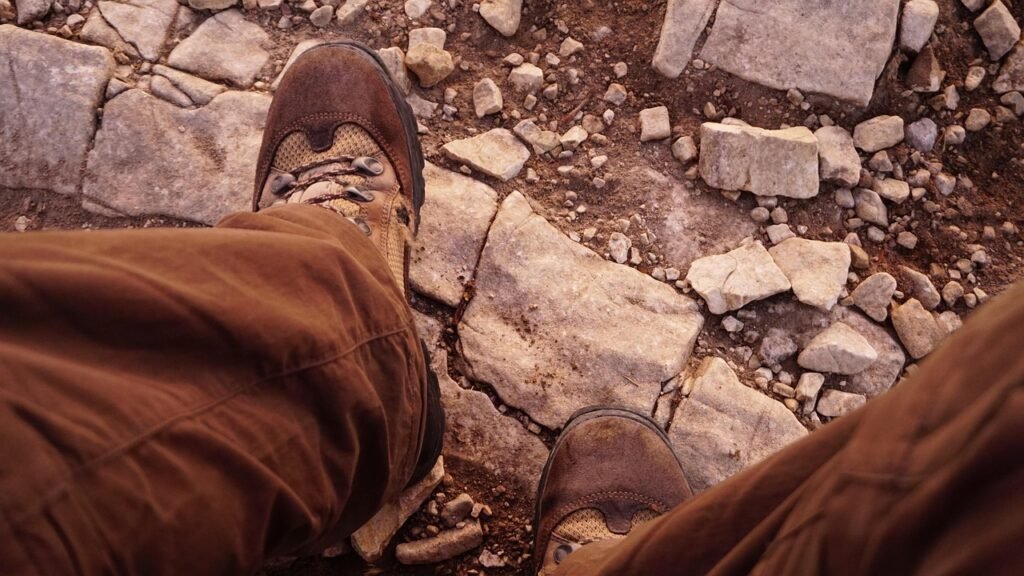How to Prevent Blisters When Hiking
Few things ruin a hike faster than painful blisters. Whether you’re a seasoned backpacker or a weekend trail walker, learning how to prevent blisters when hiking is essential for staying comfortable and injury-free. In this guide, we’ll cover the causes of hiking blisters, prevention strategies, and gear tips to keep your feet happy on every adventure.
Check out our recommended blister-prevention gear here before your next hike.

Table of Contents
- 1. Why Blisters Happen While Hiking
- 2. Sock Strategies That Actually Work
- 3. Boot Fit: Your First Line of Defense
- 4. Taping & Lubricants for High-Risk Areas
- 5. Foot Care During the Hike
- 6. Recommended Gear for Blister Prevention
1. Why Blisters Happen While Hiking
Blisters are caused by friction, heat, and moisture. When your foot rubs repeatedly against your sock or boot, the skin separates from the tissue below and fills with fluid. Understanding how to prevent blisters when hiking means reducing these three factors—friction, moisture, and pressure.
2. Sock Strategies That Actually Work
Wearing the right socks is one of the easiest and most effective ways to prevent hiking blisters:
- Choose moisture-wicking materials: Merino wool or synthetic blends reduce sweat buildup.
- Avoid cotton: It retains moisture and increases friction.
- Try liner socks: Wearing a thin synthetic sock under your main sock can reduce skin-on-sock rubbing.
3. Boot Fit: Your First Line of Defense
Even the best socks won’t help if your boots don’t fit. Here’s how to get it right:
- Ensure a snug heel with no lift
- Allow a thumb’s width of space at the toe
- Tighten laces around the ankle to avoid sliding
Visit a reputable outfitter or use a boot-fitting guide from REI’s boot fit resource to dial in your sizing.
4. Taping & Lubricants for High-Risk Areas
If you frequently get blisters in the same spots, consider using:
- Leukotape or moleskin: Apply directly to problem areas before the hike
- Anti-chafe balms: Reduce friction and wick moisture
- Duct tape: In a pinch, it offers emergency protection
5. Foot Care During the Hike
Prevention doesn’t stop once you’re on the trail. Here’s how to actively reduce blister risk during your hike:
- Take off your boots during long breaks to air out your feet
- Change into dry socks if they get damp
- Inspect your feet periodically for “hot spots” and treat them early
6. Recommended Gear for Blister Prevention
Here are some simple products that can make a big difference:
- Merino wool hiking socks
- Liner socks (nylon or polyester)
- Leukotape or KT Tape
- Anti-chafe balm like Body Glide
- Foot powder to reduce moisture
Final Thoughts
Understanding how to prevent blisters when hiking is all about preparation and small habits that add up. Start with proper footwear, layer your socks correctly, reduce friction zones with tape or balm, and take care of your feet on the trail. A blister-free hike is a happy hike—one that lets you enjoy the views instead of limping to the finish.
Learn More
For deeper guidance on foot care, visit the SectionHiker guide to preventing blisters.
Frequently Asked Questions
What is the best type of sock to prevent blisters while hiking?
Merino wool or synthetic socks that wick moisture and reduce friction are best. Avoid cotton, as it traps sweat and causes chafing.
How can I treat a hot spot before it becomes a blister?
Apply tape, moleskin, or anti-chafe balm to the hot spot immediately. Taking breaks to dry your feet can also help.
Can ill-fitting boots cause blisters even with good socks?
Yes, improper boot fit is one of the main causes of hiking blisters. Ensure a snug heel and adequate toe room to minimize movement.
Do liner socks really help prevent blisters?
Yes. Liner socks reduce skin-on-fabric friction by adding a smooth layer between your foot and your outer sock.
